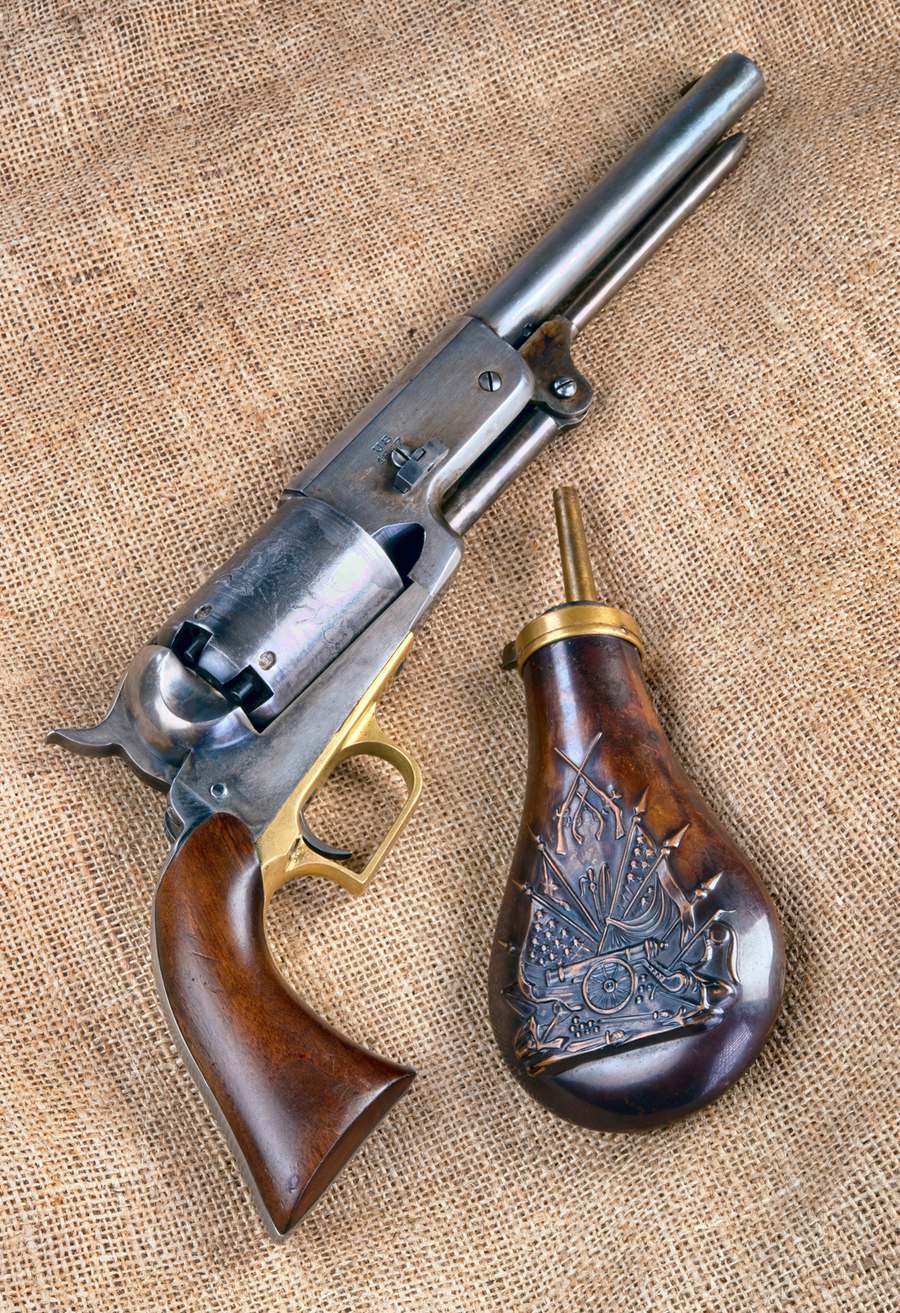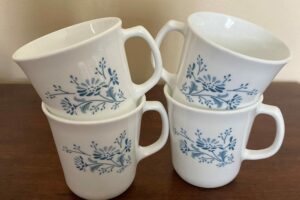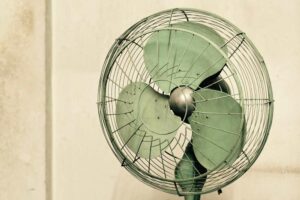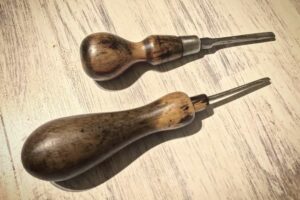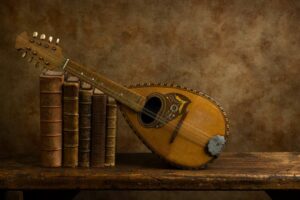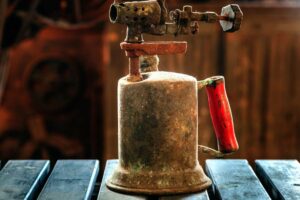Antique powder flasks are fascinating and valuable pieces of history. Often made from materials such as brass, pewter, or even cow’s horn, these flasks served a crucial purpose in the 18th and 19th centuries as the primary means to store gunpowder for muzzleloaders and other black powder firearms. As a collector, appreciating their unique features becomes an integral part of understanding not only their history, but also their value.
When attempting to identify an antique powder flask, it’s essential to look for specific characteristics. Pay attention to the shape, which could be round, oval, or half-moon, and the presence of a hinged lid with a simple latch closure. Keep an eye out for military carvings or significant markings that could indicate its origin or purpose. Examining the base may also provide clues for the flask’s age, such as beeswax or brass wood pins.
As you start your journey into the world of antique powder flasks, understanding their history and pinpointing the features that increase their value becomes an exciting challenge. With time, a keen eye for detail, and a growing knowledge of these artifacts, you’ll be well on your way to building a remarkable and valuable collection.
Table of Contents
History of
Significance in Military and Civilian Use
Antique powder flasks were essential tools for carrying gunpowder in the era of muzzle-loading firearms, commonly used by both military and civilian shooters. As a vital accessory, powder flasks held gunpowder for reloading firearms during hunting, sport shooting, and battles.
The variety of powder flasks depended on the users’ needs and preference. Some were made of common materials like brass, pewter, copper, wood, steel, or iron, while others featured intricate engravings, decorations, and hunting scenes. In the military, standardized flasks were often issued, whereas civilians used more ornate and personalized designs.
Prominent Makers and Regions
There were several prominent manufacturers of antique powder flasks, with most residing in England and America. Among them were the American Flask and Cap Company, a well-known producer of high-quality powder flasks, Civil War flasks, and the popular Peace Flask. English makers included Sykes and Hawksley, whose products were highly sought after for their craftsmanship and detailed designs.
Throughout the years, powder flasks were made in various regions, with each area having its distinct patterns, materials, and manufacturing methods. The diverse range of styles and materials used in crafting these flasks give collectors and enthusiasts a rich history to explore and appreciate.
Remember to pay attention to the details when identifying and valuing antique powder flasks. Look for signs of wear, manufacturing marks, and consider factors such as colors, the material they’re made of, and the presence of any intricate designs. By doing so, you’ll gain a deeper understanding of their historical significance and true worth.
Materials and Construction
Different Metals Used
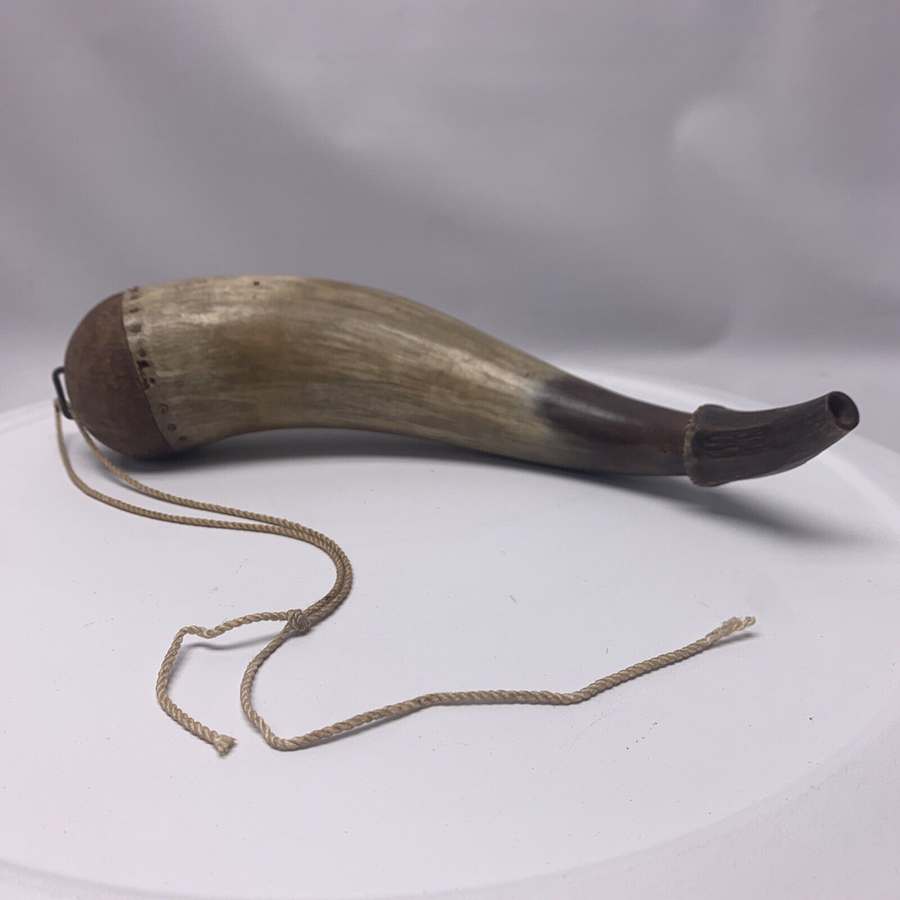
In the construction of antique powder flasks, various metals were used, with some of the most common being brass, copper, iron, and steel. However, other materials like wood, pewter, silver, gold, and zinc occasionally appeared in flask designs. The metal used often correlated with the age and origin of the flask. For example, older flasks were more likely to feature metals such as brass or copper, while newer ones might incorporate materials such as steel or zinc.
Handmade Vs Machine-made
The method of production for antique powder flasks varied greatly. Early flasks were often handmade, reflecting the individual craftsmanship that went into their creation. These flasks typically exhibit unique patterns and intricate details, making them highly desirable among collectors. On the other hand, machine-made flasks became more prevalent in the 1800s, as industrial methods allowed for greater production efficiency. Though the character of these flasks is often less distinct, flasks from well-known manufacturers can still hold considerable value.
Seams and Connections
Examining the seams and connections is an important aspect when identifying the age and value of an antique powder flask. Handmade flasks usually feature soldered or brazed seams, while machine-made flasks often have crimped or rolled edges. In general, the quality of the seam can provide insight into a flask’s overall condition, which is a key factor when determining its value.
When assessing antique powder flasks, being aware of the different metals, methods of production, and identifying features like seams and connections can greatly aid in determining their age, origin, and worth. Keeping these factors in mind will help you better understand and appreciate the items in your collection.
Identification of Antique Powder Flasks
Designs and Styles
When identifying antique powder flasks, first pay attention to the designs and styles. These flasks were commonly made of metal materials, such as brass or pewter. They come in a variety of shapes, including round, oval, and half-moon forms. Intricate engravings and patterns were often found on the flasks, showcasing the craftsmanship of the makers. Some examples of designs are:
- Clasped hands within a circle of stars
- An eagle with wings spread and a shield of stars and stripes on its breast
- Scenic landscapes, hunting scenes, or historical events
Makers Marks and Signatures
You should also look for the maker’s marks or signatures on antique powder flasks. These markings, usually found on the flask’s body or the charger, can help you in determining the origin and age of the flask. Some renowned makers of powder flasks were G & J.W Hawksley, James Dikon & Sons, and Sykes. If you find a flask with the marks or signatures of one of these makers, it increases the likelihood of it being an original antique.
Powder Chargers and Spring Systems
Examine the powder charger and spring system of the flask as well. A powder charger, or adjustable charger, was designed to measure out the appropriate amount of gunpowder for your muzzleloader or black powder weapons such as pistols and rifles. Some flasks used for rifles or priming cannons did not have adjustable chargers.
The spring system ensures the powder is dispensed consistently and efficiently. To help determine the authenticity of the flask, check whether the spring system is in good condition and fits seamlessly with the overall design.
Keep in mind that while identifying antique powder flasks, it is essential to pay attention to the design and styles, makers marks and signatures, as well as powder chargers and spring systems. This will help you ensure that you’re purchasing an authentic and valuable collector’s item.
Valuation and Collecting Powder Flasks
Factors Influencing Value
When determining the value of an antique powder flask, several factors can influence its worth. Some of the key aspects to consider include the flask’s age, condition, material composition, and rarity. Let’s examine how each of these components contributes to an antique powder flask’s valuation:
- Age: Older flasks generally hold more value, assuming they’re in good condition.
- Condition: Flasks with minimal wear and corrosion will be worth more than flasks that show significant signs of use or damage.
- Material Composition: The type of material used to create the flask (such as brass, copper, or pewter) can impact its value.
- Rarity: Unique designs, limited production runs, or difficult-to-find models will typically command higher prices.
Below is a valuation table incorporating each of these factors:
| Flask Age | Average Valuation Range |
|---|---|
| Pre-1800 | $800 – $1,000 |
| Early 1800s – Mid-1800s | $300 – $600 |
| Late 1800s – Early 1900s | $150 – $350 |
| Mid-1900s – Present | $50 – $150 |
Auctions and Online Marketplaces
One of the most popular ways to acquire antique powder flasks is through auctions and online marketplaces, such as eBay or Etsy. These platforms offer a wide variety of options, from individual sale listings to auctions where you can bid on a specific item.
When purchasing or selling through these channels, it’s essential to consider the following:
- Photos: Examine images in listings closely to verify the condition, wear, and corrosion mentioned in the description.
- Descriptions: Thoroughly read the seller’s account of the item, paying attention to any details that may influence its value.
- Returns Policy: Ensure the seller accepts returns if the item is not as described, or if the condition doesn’t match the images.
- Shipping Costs: Take into account any shipping fees that may be included in the final price.
- Seller’s Reputation: Assess the seller’s feedback and ratings to determine their credibility and trustworthiness.
- Final Price: Compare the closing price to the above valuation table to ensure that you’re paying a fair amount for the particular flask.
By taking these steps, you can protect yourself against misrepresented items or fraudulent sellers when shopping for antique powder flasks through auctions and online marketplaces.
Reproductions and Fakes
How to Spot a Fake
When trying to spot a fake antique powder flask, pay close attention to the design and materials used. Original powder flasks were typically made of metal, such as brass or pewter, and often featured intricate engravings or patterns. To spot a fake, consider the following aspects:
- Design: Reproduction powder flasks may have simpler, less detailed designs compared to the originals. Look for quality and complexity in the engravings or patterns.
- Materials: Authentic powder flasks were made of high-quality metal materials, whereas reproductions may use cheaper metals or plastics.
- Maker’s Mark: Originals often have a maker’s mark, a distinctive stamp or engraving indicating the manufacturer. Reproductions may lack this mark, so research potential manufacturers and their marks to help distinguish between a genuine and a fake flask.
- Condition: Over time, genuine powder flasks will show signs of aging and wear. A flask appearing too new or in pristine condition should be examined closely.
Tips for Avoiding Reproductions
Knowing how to spot a fake can help you avoid reproductions and ensure the authenticity of your antique powder flask. Here are some tips for steering clear of reproductions:
- Do your research: Familiarize yourself with the different types of powder flasks, their materials, designs, and maker’s marks. Build a strong foundation of knowledge before starting your search.
- Examine the flask closely: Take time to closely inspect the flask’s design, materials, and engravings. Compare it with examples of genuine flasks to spot discrepancies.
- Seek expert advice: Consult an appraiser, dealer, or collector who specializes in antique powder flasks. They can provide valuable insight and help verify authenticity.
- Purchase from reputable sources: Buy from established antique dealers, auction houses, or collectors rather than casual sellers or less-trustworthy online listings.
By following these tips and developing your understanding of antique powder flasks, you should be better equipped to differentiate between original items and reproductions. Remember to stay diligent, thorough, and knowledgeable in your search for authentic antique powder flasks.
Care and Preservation of Powder Flasks
Storage and Display
To preserve your antique powder flasks in their best condition, it is crucial to store and display them properly. Keep your powder flasks away from direct sunlight, as prolonged exposure to the sun can cause discoloration and fading. Find a cool, dry place to store your powder flasks to prevent humidity from causing corrosion and other damage over time. Ensure that the area is well-ventilated to prevent any moisture buildup.
When displaying your powder flasks, consider using a glass or acrylic case to protect them from dust, dirt, and accidental damage. Make sure the case provides adequate support to reduce the risk of wear to the flask’s surfaces. To prevent any potential damage, avoid handling your antique powder flasks excessively.
Cleaning and Maintenance
Regular cleaning and maintenance can help ensure that your powder flasks retain their value and appearance. Here are a few steps to clean and maintain your antique powder flasks:
- Dusting: Gently dust your powder flasks using a soft, dry cloth or a soft-bristled brush. This helps remove any dirt and dust accumulated on the surface without causing any scratches or abrasions.
- Cleaning: For a more thorough cleaning, mix a few drops of mild dish soap with water to form a gentle cleaning solution. Dampen a soft cloth with this solution and gently wipe the surface of your powder flask. Avoid using abrasive cleaners as they may scratch the surface and damage the flask’s finish. Remember to dry the flask thoroughly with a clean, soft cloth to prevent watermarks and corrosion.
- Inspecting: Regularly inspect your powder flasks for any signs of wear or corrosion. Early detection can help prevent further damage and preserve your antique’s value. If you notice any significant issues, consult a professional conservator for advice on the appropriate course of action.
By following these care guidelines, you can help ensure the longevity of your antique powder flasks and maintain their functionality and aesthetic appeal.


